

Blockchain
Market maker deals are quietly killing crypto projects – Crypto News
The right market maker can be a launchpad for a cryptocurrency project, opening the door to major exchanges and providing valuable liquidity to ensure a token is tradeable — but when the wrong incentives are baked into the deal, that market maker can become a wrecking ball.
One of the most popular and misunderstood offerings in the market-making world is the “loan option model.” This is when a project lends tokens to a market maker, who then uses them to create liquidity, improve price stability, and help secure listings at a cryptocurrency exchange. In reality, it has been a death sentence for many young projects.
But behind the scenes, a number of market makers is using the controversial token loan structure to enrich themselves at the expense of the very projects they’re meant to support. These deals, often framed as low-risk and high-reward, can crater token prices and leave fledgling crypto teams scrambling to recover.
“How it works is that market makers essentially loan tokens from a project at a certain price. In exchange for those tokens, they essentially promise to get them on big exchanges,” Ariel Givner, founder of Givner Law, told Cointelegraph. “If they don’t, then within a year, they repay them back at a higher price.”
What often happens is that market makers dump the loaned tokens. The initial sell-off tanks the price. Once the price has cratered, they buy the tokens back at a discount while keeping the profit.
Source: Ariel Givner
“I haven’t seen any token really benefit from these market makers,” Givner said. “I’m sure there are ethical ones, but the bigger ones I’ve seen just destroy charts.”
The market maker playbook
Firms like DWF Labs and Wintermute are some of the best-known market makers in the industry. Past governance proposals and contracts reviewed by Cointelegraph suggest that both firms proposed loan option models as part of their services — though Wintermute’s proposals call them “liquidity provision” services.
DWF Labs told Cointelegraph that it doesn’t rely on selling loaned assets to fund positions, as its balance sheet sufficiently supports its operations across exchanges without relying on liquidation risk.
“Selling loaned tokens upfront can damage a project’s liquidity — especially for small- to mid-cap tokens — and we’re not in the business of weakening ecosystems we invest in,” Andrei Grachev, managing partner of DWF Labs, said in a written response to Cointelegraph’s inquiry.
Related: Who’s really getting rich from the crypto bull run?
While DWF Labs emphasizes its commitment to ecosystem growth, some onchain analysts and industry observers have raised concerns about its trading practices.
Wintermute did not respond to Cointelegraph’s request for comment. But in a February X post, Wintermute CEO Evgeny Gaevoy published a series of posts to share some of the company’s operations with the community. He bluntly stated that Wintermute is not a charity but in the “business of making money by trading.”
Source: Evgeny Gaevoy
What happens after the market maker gets the tokens?
Jelle Buth, co-founder of market maker Enflux, told Cointelegraph that the loan option model is not unique to the well-known market makers like DWF and Wintermute and that there are other parties offering such “predatory deals.”
“I call it information arbitrage, where the market maker very clearly understands the pros and cons of the deals but is able to put it such that it’s a benefit. What they say is, ‘It’s a free market maker; you don’t have to put up the capital as a project; we provide the capital; we provide the market-making services,’” Buth said.
On the other end, many projects don’t fully understand the downsides of loan option deals and often learn the hard way that they weren’t built in their favor. Buth advises projects to measure whether loaning out their tokens would result in quality liquidity, which is measured by orders on the book and clearly outlined in the key performance indicators (KPIs) before committing to such deals. In many loan option deals, KPIs are often missing or vague when mentioned.
Cointelegraph reviewed the token performance of several projects that signed loan option deals with market makers, including some that worked with multiple firms at once. The outcome was the same in those examples: The projects were left worse off than when they started.
Six projects that worked with market makers under the loan option agreement tanked in price. Source: CoinGecko
“We’ve worked with projects that were screwed over after the loan model,” Kristiyan Slavev, co-founder of Web3 accelerator Delta3, told Cointelegraph.
“It’s exactly the same pattern. They give tokens, then they’re dumped. That’s pretty much what happens,” he said.
Not all market-maker deals end in disaster
The loan option model isn’t inherently harmful and can even benefit larger projects, but poor structuring can quickly turn it predatory, according to Buth.
A listings adviser who spoke to Cointelegraph on the condition of anonymity echoed the point, emphasizing that outcomes depend on how well a project manages its liquidity relationships. “I’ve seen a project with up to 11 market makers — about half using the loan model and the rest smaller firms,” they said. “The token didn’t dump because the team knew how to manage price and balance the risk across multiple partners.”
The adviser compared the model to borrowing from a bank: “Different banks offer different rates. No one runs a money-losing business unless they expect a return,” they said, adding that in crypto, the balance of power often favors those with more information. “It’s survival of the fittest.”
But some say the problem runs deeper. In a recent X post, Arthur Cheong, founder of DeFiance Capital, accused centralized exchanges of feigning ignorance of artificial pricing fueled by token projects and market makers working in lockstep. “Confidence in the altcoin market is eroding,” he wrote. “Absolutely bizarre that CEXs are turning an absolute blind eye to this.”
Still, the listings adviser maintained that not all exchanges are complicit: “The different tier exchanges are also taking really extreme actions against any predatory market makers, as well as projects that might look like they rugged. What exchanges do is they actually immediately lock up that account while they do their own investigation.”
“While there is a close working relationship, there is no influence between the market maker and the exchange of what gets listed. Every exchange would have their own due diligence processes. And to be frank, depending on the tier of the exchange, there is no way that there would be such an arrangement.”
Related: Crypto’s debanking problem persists despite new regulations
Rethinking market maker incentives
Some argue for a shift toward the “retainer model,” where a project pays a flat monthly fee to a market maker in exchange for clearly defined services rather than giving away tokens upfront. It’s less risky, though more expensive in the short term.
“The retainer model is much better because that way, market makers have incentives to work with the projects long term. In a loan model, you get, like, a one-year contract; they give you the tokens, you dump the tokens, and then one year after that, you return the tokens. Completely worthless,” Slavev said.
While the loan option model appears “predatory,” as Buth put it, Givner pointed out that in all these agreements, both parties involved agree to a secure contract.
“I don’t see a way that, at this current time, this is illegal,” Givner said. “If somebody wanted to look at manipulation, that’s one thing, but we’re not dealing with securities. So, that gray area is still there in crypto — [to] some extent the Wild West.”
The industry is becoming more aware of the risks tied to loan option models, especially as sudden token crashes increasingly raise red flags. In a now-deleted X post, onchain account Onchain Bureau claimed that a recent 90% drop in Mantra’s OM token was due to an expiring loan option deal with FalconX. Mantra denied the claim, clarifying that FalconX is a trading partner, not its market maker.
Edited LinkedIn copy of Onchain Bureau’s LinkedIn post. Source: Nahuel Angelone
But the episode highlights a growing trend: The loan option model has become a convenient scapegoat for token collapses — often with good reason. In a space where deal terms are hidden behind NDAs and roles like “market maker” or “trading partner” are fluid at best, it’s no surprise the public assumes the worst.
“We’re speaking up because we make money off the retainer model, but also, this [loan option model] is just killing projects too much,” Buth said.
Until transparency and accountability improve, the loan option model will remain one of crypto’s most misunderstood and abused deals.
Magazine: What do crypto market makers actually do? Liquidity or manipulation
-

 Blockchain1 week ago
Blockchain1 week agoThe CFO and Treasurer’s Guide to Digital Assets – Crypto News
-
Cryptocurrency3 days ago
Pi Community Highlights Pi Coin’s Slow Growth As ‘Strategic’ – Crypto News
-

 Cryptocurrency1 week ago
Cryptocurrency1 week agoSolana Price Upside Prevails After Securing Key Support, $127 In Focus – Crypto News
-
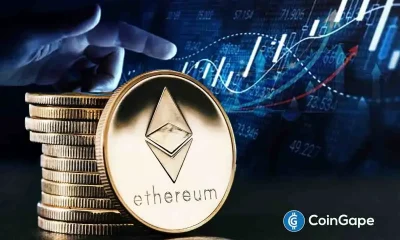
 Business1 week ago
Business1 week agoEthereum Whales Sell On Rise, Will This ETH Price Bounce Sustain? – Crypto News
-

 Technology1 week ago
Technology1 week agoMicrosoft’s Greatest Hits and Epic Fails: A 50-Year Wild Ride – Crypto News
-

 Blockchain1 week ago
Blockchain1 week agoHow to mine Bitcoin at home in 2025: A realistic guide – Crypto News
-

 Blockchain6 days ago
Blockchain6 days agoCZ claps back against ‘baseless’ US plea deal allegations – Crypto News
-

 Cryptocurrency4 days ago
Cryptocurrency4 days agoWhite House Mulls Bitcoin Reserve Backed by Gold and Tariffs – Crypto News
-
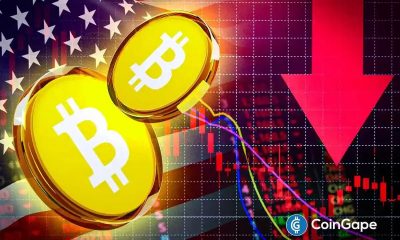
 Business1 week ago
Business1 week agoCrypto Liquidations Hit $573 Million as BTC, ETH Sees rebound – Crypto News
-

 Cryptocurrency1 week ago
Cryptocurrency1 week agoDOGE Price Moves as Dogecoin Whales Go on Buying Spree – Crypto News
-
Technology1 day ago
Expert Predicts Pi Network Price Volatility After Shady Activity On Banxa – Crypto News
-
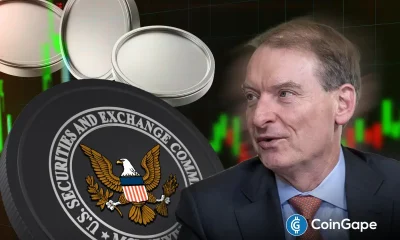
 Business1 week ago
Business1 week agoUS Senate Confirms Pro-Crypto Paul Atkins As SEC Chair – Crypto News
-
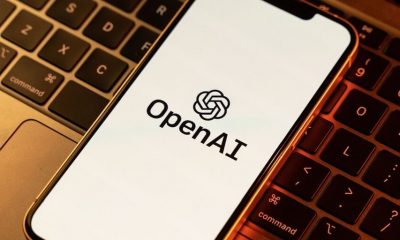
 Cryptocurrency1 week ago
Cryptocurrency1 week agoOpenAI Countersues Elon Musk, Accuses Billionaire of ‘Bad-Faith Tactics’ – Crypto News
-

 Blockchain1 week ago
Blockchain1 week agoBitpanda secures third MiCA license in home jurisdiction of Austria – Crypto News
-

 Blockchain1 week ago
Blockchain1 week agoSEC drops suit against Helium for alleged securities violations – Crypto News
-

 Blockchain1 week ago
Blockchain1 week agoBlackRock reports $3B in digital asset inflows during Q1 – Crypto News
-

 Blockchain1 week ago
Blockchain1 week agoBreakout To $1,800 With These Two Supply Zones – Crypto News
-

 Metaverse1 week ago
Metaverse1 week agoAmul girl to Nirma: Viral AI video brings classic Indian mascots to life, users stir debate over ethics – Crypto News
-

 Blockchain1 week ago
Blockchain1 week agoBTC, ETH, XRP, BNB, SOL, DOGE, ADA, LEO, LINK, AVAX – Crypto News
-

 Technology1 week ago
Technology1 week agoDogecoin Price Gearing for A 3X Rally Amid DOGE Whale Accumulation – Crypto News
-

 Technology7 days ago
Technology7 days agoHow to transcribe and translate YouTube videos for free using Gemini 2.5 Pro? Check our step-by-step guide – Crypto News
-

 Cryptocurrency7 days ago
Cryptocurrency7 days agoFusaka fork takes shape as Pectra enters final stretch – Crypto News
-

 others7 days ago
others7 days agoBinance Issues Important Update On 10 Crypto, Here’s All – Crypto News
-

 Cryptocurrency7 days ago
Cryptocurrency7 days agoProfessor Coin: What’s Driving Cryptocurrency Adoption Around the World – Crypto News
-
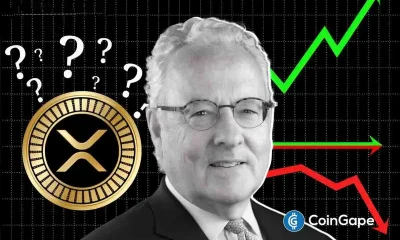
 others7 days ago
others7 days agoRipple Community Remains Disappointed With Hinman Report, What’s Next? – Crypto News
-

 Cryptocurrency7 days ago
Cryptocurrency7 days agoBitcoin – Here’s what’s next after sellers near exhaustion levels – Crypto News
-

 others7 days ago
others7 days agoMexican Peso ends week strong as USD plunges on China tariff retaliation – Crypto News
-
![Shiba Inu [SHIB] price prediction - A 70% rally next after 900%+ burn rate hike?](https://dripp.zone/news/wp-content/uploads/2025/04/Shiba-Inu-SHIB-price-prediction-A-70-rally-next-400x240.png)
![Shiba Inu [SHIB] price prediction - A 70% rally next after 900%+ burn rate hike?](https://dripp.zone/news/wp-content/uploads/2025/04/Shiba-Inu-SHIB-price-prediction-A-70-rally-next-80x80.png) Cryptocurrency6 days ago
Cryptocurrency6 days agoShiba Inu [SHIB] price prediction – A 70% rally next after 900%+ burn rate hike? – Crypto News
-
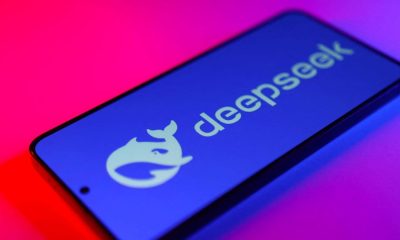
 Metaverse6 days ago
Metaverse6 days agoForget DeepSeek. Large language models are getting cheaper still – Crypto News
-

 Technology6 days ago
Technology6 days agoApple ramps up India production amid China uncertainty, assembles $22 billion worth iPhones in a year – Crypto News
-

 Blockchain4 days ago
Blockchain4 days agoOn-Chain Clues Suggest Bitcoin Bounce Might Be a False Signal—Here’s What to Know – Crypto News
-

 Blockchain2 days ago
Blockchain2 days agoBitcoin online chatter flips bullish as price chops at $85K: Santiment – Crypto News
-
Business2 days ago
Cardano (ADA) and Dogecoin (DOGE) Eye For Bullish Recovery – Crypto News
-

 others1 week ago
others1 week agoCrypto Products See $240,000,000 in Outflows Likely in Response to US Tariff Threats: CoinShares – Crypto News
-

 Technology1 week ago
Technology1 week agoBest water purifiers in India April 2025: Which one saves maintenance costs while providing pure, safe drinking water? – Crypto News
-
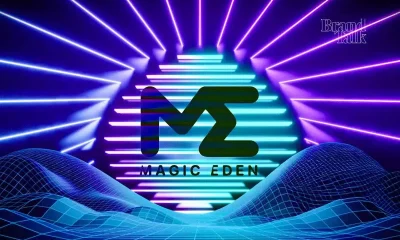
 Technology1 week ago
Technology1 week agoWhat It Means for NFT Traders – Crypto News
-

 Blockchain1 week ago
Blockchain1 week agoNY attorney general urges Congress to keep pensions crypto-free — ‘No intrinsic value’ – Crypto News
-

 Technology1 week ago
Technology1 week agoiQOO Z10 5G, Z10x 5G launched in India, price starts at ₹13,499. Check full price, specs and more – Crypto News
-

 Blockchain1 week ago
Blockchain1 week agoAnalyst Compares Trump’s Market Impact to Obama Era as Bitcoin Sees Momentum – Crypto News
-

 Metaverse1 week ago
Metaverse1 week agoGoogle launches Gemini 2.5 Flash—Ideal for chatbots, assistants and instant summarisation – Crypto News
-

 Business1 week ago
Business1 week agoCosmos Debuts Eureka to Bridge Ethereum – Crypto News
-

 others1 week ago
others1 week agoGBP advance lags core peers – Scotiabank – Crypto News
-
others1 week ago
Russia Consumer Price Index (MoM) down to 0.65% in March from previous 0.8% – Crypto News
-
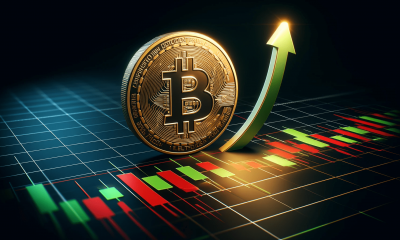
 Blockchain1 week ago
Blockchain1 week agoBitcoin Poised For W-Bottom Reversal, Says John Bollinger – Crypto News
-

 Blockchain1 week ago
Blockchain1 week agoEthereum Capitulation Nearing Its End? Key On-Chain Metric Reveals Insights – Crypto News
-

 others7 days ago
others7 days agoThere is more work to do on inflation – Crypto News
-

 Business7 days ago
Business7 days agoBankless Cofounder David Hoffman Reveals Strategy To Improve Ethereum Price Performance – Crypto News
-
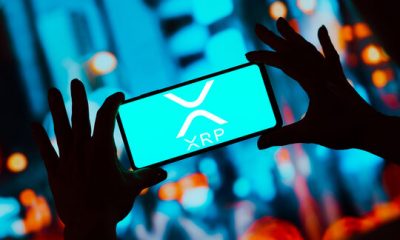
 Blockchain7 days ago
Blockchain7 days agoXRP Price To Hit $45? Here’s What Happens If It Mimics 2017 And 2021 Rallies – Crypto News
-

 others7 days ago
others7 days agoOn-Chain Indicator Suggests Ethereum (ETH) Could Be Undervalued, According to Crypto Analyst – Crypto News
-

 Technology6 days ago
Technology6 days agoPrice drop on 43 inch TVs: Grab the best deals on Samsung, Sony, Xiaomi and more, up to 57% off – Crypto News














